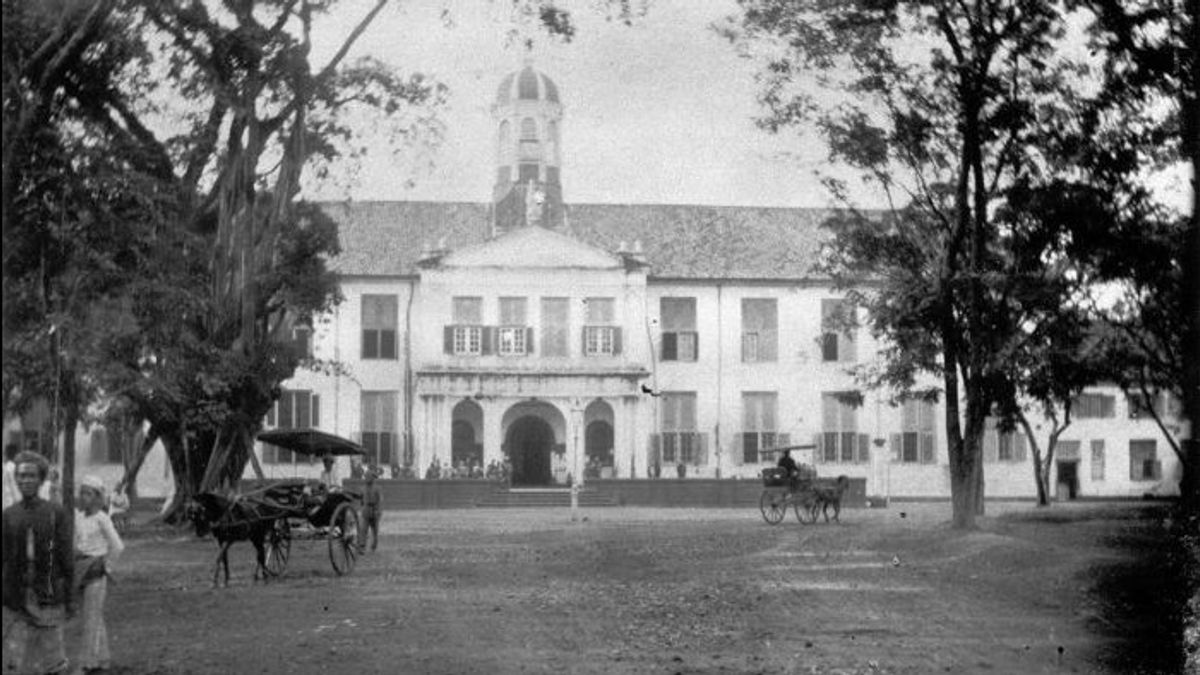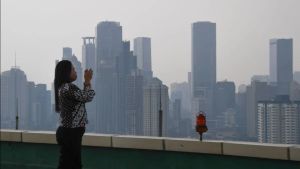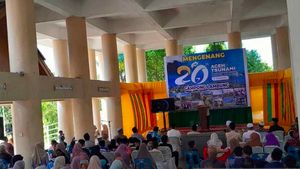JAKARTA - “How many years ago, I was still living in Betawi. I know there is a private master who is holding the office in one of the rooms in Gedong Bicara (Stadhuis). Mr. Particulier works incessantly, he refuses to take fees for writing recests. "
Such is the content of a story fragment from Kwee Tek Hoay in a book entitled Chinese Malay Literature and Indonesian Nationality Volume 4 (2001). He floated that there were often officials who were allegedly charging wages so that they subtly blackmailed every Chinese person who was dealing with the Dutch colonial government in Gedong Bicara.
For this reason, people became aware of why the name of the City Hall (Stadhuis) where the Governor General Vereenigde Oostindische Compagnie (VOC) had the office of - now known as the Jakarta History museum - was called the Talk Building by the Batavian community at that time. The nickname was none other than because that was where natives and other people could talk to officials.
Moreover, at that time City Hall was the administrative center in Batavia. In fact, it is often used as the center of government, courts, civil registries, and worship on holidays. Therefore, the building dating from the 18th century is always synonymous with the place where VOC officials committed arbitrary acts against the natives, and even worse for them Chinese people.
How could it not be, compared to other Batavia residents, Chinese people, who from the beginning of Batavia's existence, were required to pay taxes five times more to build city fortress walls. They were also charged three times as much tax for building City Hall.

Quoted from Windoro Adi, in a book entitled Batavia 1740: Combing Betawi Footprints (2010), it is revealed that it was not only when Batavia was founded that Chinese people were asked for taxes. After that, they became close in and out of the Talking Building to pay taxes. "Apart from paying the head tax, Chinese people are also subject to other taxes, such as the gambling tax, the pork slaughter tax, the spectacle tax and the tobacco tax," it said.
This was done by the colonial government because almost all business sectors in Batavia were almost controlled by Chinese people, from the grassroots level to the elite. The proof is, around Oud Batavia or old Batavia - the Old City area, Chinese settlements are so easy to find. "Chinese settlements developed in almost all markets in Batavia, forming pockets of Chinatowns. It is characterized by a row of Chinese-style shop houses, ”writes.
Therefore, every time the people in Batavia would pay taxes to the City Hall, people's memories would be fixed on that era. They also call the twin building the Dam Palace in Amsterdam, the Netherlands - as a symbol of brotherhood - with Gedong Bicara.
Death penalty and dungeon
One of the people who was amazed by the splendor of Gedong Bicara was Dutch soldier HCC Clockener Brousson. In his book, Batavia Awal 20th Century (2004), he wrote an impression of the building that was inaugurated by the Governor General Abraham Van Riebeeck in 1710. As a young Amsterdam person who loves traveling, the impression given by Brousson is interesting.
Brousson expressed his amazement with the large white two-story building with large windows. Instantly stopped admiring when I looked right in front of the building saw a stage where the execution of the death penalty and sometimes opened to murderers who have committed crimes.
Even though at that time the Talking Building was no longer used as the seat of the Governor General of the Dutch East Indies - because the center of government had been moved to Weltevreden or the area around the Banteng field, the mystical nuances of the place were still felt. Especially, when Brousson turned his gaze to the lower part of Gedong Bicara, which was an ancient dungeon from the VOC era.
The prison used to be very actively used to accommodate criminals and rebels who were not in line with the Company. Alwi Shahab, in his book Maria van Engels: Men-in-law of Habib Kwitang (2006) also writes the same thing.
“The City Hall building looks magnificent until now. However, this building used to be a court, and at the bottom is a dungeon. In the past, in the eastern wing of the City Hall, a "wooden horse, a kind of horse, with a sharp back, was installed. The inmate sat on it for days with heavy weights on both legs. Terrible torture," wrote Alwi Shahab.
Alwi also added that hanging or beheading is often carried out in front of Gedong Bicara. Interestingly, until now, when visiting the Jakarta History Museum, the sword of justice, which knows how many times it has separated the heads and bodies of people with the death penalty can still be seen.

Regarding the description of the dungeon, it can be obtained through Iksaka Banu's short story Pollux in the book "All for the Indies" (2014). Himself made a dream, "I wake up because of the difference in temperature and light. Sun! I can see quite a lot now: the very low concrete roof, the shabby walls, the haystack of my sleeping mat, the mossy floor. "
Not only that, the people who are punished there will feel unable to stand upright. "I stretched, trying to get straight on my legs. But it turns out the roof of this room is lower than I thought. I must bow deeply. In the end I fought like that man. "
That's how the short story owner describes the atmosphere in the dungeon. To the point that Iksana's story did not forget to emphasize the sentence:
Good morning. Welcome to Stadhuis Batavia. We are about ten feet below the ground floor (Gedong Bicara). Not far from Raad van Justitie (center of justice).
The English, Chinese, Japanese, Arabic, and French versions are automatically generated by the AI. So there may still be inaccuracies in translating, please always see Indonesian as our main language. (system supported by DigitalSiber.id)










